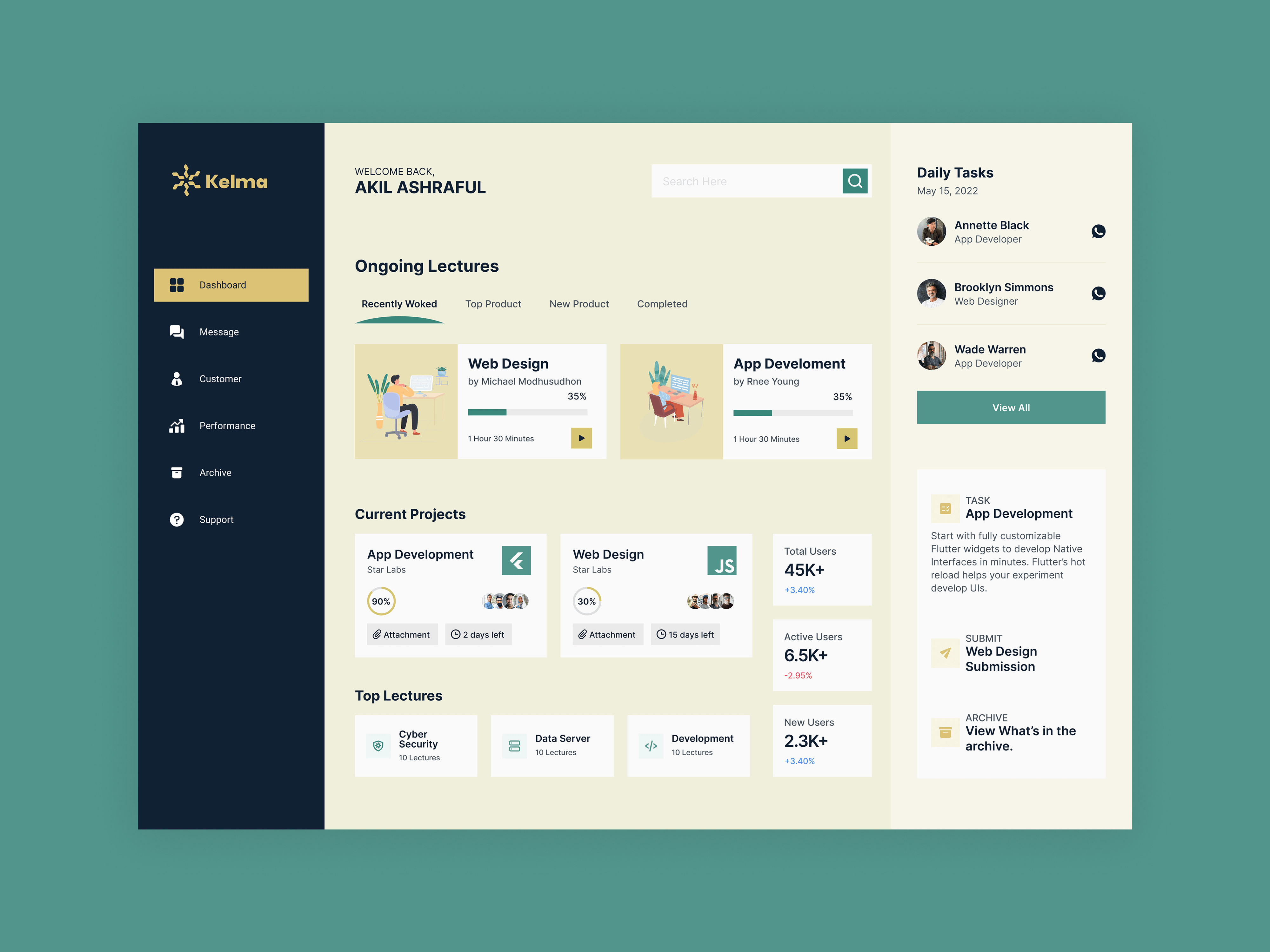Introduction
Are you ready to take your SaaS user experience to the next level? Look no further than effective UX design strategies. Revolutionize the way your customers engage with your software by implementing thoughtful and user-centric design principles. In an era where users expect seamless experiences across all platforms, a well-designed user interface can be the game-changer your business needs. From intuitive navigation to visually appealing aesthetics, every aspect of UX design plays a vital role in capturing and retaining users.
With the right UX design strategies, you can enhance user satisfaction, increase engagement, and drive conversions. Whether you’re developing a new SaaS product or looking to improve your existing one, investing in user experience design is a must. In this article, we will explore the various tactics and tips that can help you revolutionize your SaaS user experience. From conducting user research to creating intuitive wireframes, we’ll guide you through the essential steps to provide an impeccable user interface. Don’t miss out on the opportunity to leave a lasting impression on your users. Let’s delve into the world of effective UX design strategies and transform your SaaS product into a user-friendly powerhouse.
Importance of UX Design Strategies in SaaS
User experience (UX) is a critical factor that can make or break the success of your SaaS product. In a crowded marketplace with numerous competitors vying for attention, providing exceptional user experience becomes even more crucial. Users have high expectations when it comes to the usability and functionality of software applications, and a poorly designed user interface can quickly lead to frustration and abandonment.
A well-designed UX not only enhances user satisfaction but also leads to increased engagement and improved conversion rates. When users find your SaaS application intuitive and user-friendly, they are more likely to explore its features, spend more time using it, and ultimately convert into paying customers. By investing in UX design strategies, you can create a competitive advantage and differentiate your product from the rest. To design an effective user experience, it is essential to understand the user journey within your SaaS application. The user journey refers to the path that a user takes from the moment they land on your application to the desired action or outcome. By mapping out this journey, you can identify pain points, areas of improvement, and opportunities to deliver a seamless experience.
Start by identifying the different touchpoints within your application, such as the homepage, login/signup process, feature pages, and checkout process. Analyze user behavior at each stage and identify any bottlenecks or areas where users may drop off. By understanding the user journey, you can make informed design decisions and optimize the flow of your application to guide users towards their goals.
Key Principles of Effective UX Design in SaaS
When it comes to UX design in SaaS, there are several key principles that can guide your design decisions and ensure a positive user experience. These principles include:
- Simplicity and Clarity: Keep your interface simple and clutter-free. Use clear and concise language, intuitive navigation, and visual hierarchy to guide users through your application.
- Consistency: Maintain consistency in design elements, such as color schemes, typography, and button styles, throughout your application. Consistency helps users build familiarity and reduces cognitive load.
- Accessibility: Ensure that your application is accessible to users with disabilities. Consider factors such as color contrast, font size, keyboard navigation, and screen reader compatibility.
- Feedback and Validation: Provide feedback to users when they interact with your application. Use visual cues, animations, and notifications to inform users about the status of their actions and validate their inputs.
- Error Handling: Plan for error scenarios and design error messages that are clear, helpful, and actionable. Guide users on how to resolve errors and prevent them from occurring in the future.
By following these principles, you can create an intuitive and user-friendly interface that enhances the overall user experience of your SaaS application.
Conducting User Research and Gathering Feedback
User research is a crucial step in the UX design process. By understanding your target users’ needs, preferences, and pain points, you can design a product that resonates with them and meets their expectations. User research can be conducted through various methods, such as surveys, interviews, usability testing, and analyzing user behavior data.
Start by identifying your target audience and creating user personas that represent different user segments. User personas help you empathize with your users and design solutions that cater to their specific needs. Once you have defined your user personas, conduct user interviews or surveys to gather qualitative insights. Ask open-ended questions to understand their goals, challenges, and expectations regarding a SaaS product like yours.
In addition to user research, gathering feedback from your existing users is equally important. Implement feedback mechanisms within your application, such as feedback forms or in-app surveys, to collect valuable insights. Analyze this feedback to identify trends, recurring issues, and opportunities for improvement. By involving your users in the design process, you can ensure that your SaaS application meets their expectations and provides a delightful user experience.
Creating User Personas for SaaS Applications
User personas are fictional representations of your target users and help you understand their motivations, goals, and behaviors. Creating user personas for SaaS applications enables you to design a user experience that aligns with your users’ needs and preferences.
Start by conducting research and gathering data about your target audience. This can include demographic information, job titles, industry, pain points, and goals. Use this information to create profiles that represent different user segments within your target audience.
For each user persona, include details such as their background, goals, challenges, preferred features, and typical usage scenarios. Visualize your user personas by adding stock photos or illustrations to make them more relatable. User personas serve as a reference point throughout the design process and help you make user-centric decisions.
Designing Intuitive and User-friendly Interfaces
Designing an intuitive and user-friendly interface is a crucial aspect of UX design in SaaS applications. A well-designed interface not only enhances usability but also improves user satisfaction and engagement. Here are some tips to create an intuitive and user-friendly interface:
- Clear and Consistent Navigation: Use a logical and consistent navigation structure that allows users to easily find what they are looking for. Use descriptive labels and organize navigation elements based on user priorities.
- Visual Hierarchy: Use visual cues, such as color, size, and typography, to create a clear visual hierarchy. Highlight important elements and guide users’ attention to the most relevant information.
- Whitespace and Layout: Use whitespace effectively to create breathing room between elements and improve readability. Pay attention to the layout and ensure that it is well-organized and visually balanced.
- Responsive Design: Design your application to be responsive and compatible with different devices and screen sizes. Ensure that your interface adapts seamlessly to mobile, tablet, and desktop devices.
- Microinteractions: Incorporate subtle animations and microinteractions to provide feedback and enhance the overall user experience. Microinteractions can make interactions feel more engaging and responsive.
By following these design principles and incorporating user feedback, you can create an intuitive and user-friendly interface that keeps users engaged and delighted.
Optimizing Performance and Speed in SaaS Applications
Performance and speed are crucial factors that can significantly impact the user experience in SaaS applications. Users expect fast-loading pages and seamless interactions, and any delays or lags can lead to frustration and abandonment. Here are some tips to optimize the performance and speed of your SaaS application:
- Optimize Code and Assets: Minimize the size of your code and assets, such as images and scripts, to reduce load times. Compress images, use minified code, and leverage browser caching to improve performance.
- Server-Side Optimization: Optimize your server-side infrastructure to handle increased traffic and requests efficiently. Use caching mechanisms, load balancing, and content delivery networks (CDNs) to improve response times.
- Lazy Loading: Implement lazy loading techniques to load content as users scroll, rather than loading everything upfront. This can significantly improve initial page load times and enhance user experience.
- Performance Monitoring: Continuously monitor the performance of your application using tools like Google PageSpeed Insights or GTmetrix. Identify performance bottlenecks and take necessary steps to optimize them.
By prioritizing performance optimization and ensuring fast load times, you can provide a seamless and enjoyable user experience in your SaaS application.
Implementing Responsive design for Multi-device Compatibility
In today’s multi-device world, it is crucial to design SaaS applications that are compatible with various devices and screen sizes. Responsive design allows your application to adapt and provide an optimal user experience on smartphones, tablets, and desktops. Here are some best practices for implementing responsive design:
- Mobile-First Approach: Start by designing for mobile devices and then scale up for larger screens. This ensures that the most critical content and interactions are prioritized for mobile users.
- Flexible Grids and Layouts: Use flexible grids and layouts that can adapt to different screen sizes. Avoid fixed-width elements that may break or become unreadable on smaller screens.
- Media Queries: Use media queries to apply different styles or layouts based on the screen size. This allows you to customize the user experience for different devices without creating separate versions of your application.
- Touch-Friendly Interactions: Design touch-friendly interactions, such as larger buttons and form fields, to accommodate touch-based devices. Consider the limited screen real estate and ensure that interactions are easy to perform on smaller screens.
By implementing responsive design techniques, you can ensure that your SaaS application provides a consistent and optimized user experience across different devices.
A/B Testing and Iterative Improvement for UX in SaaS
A/B testing is a powerful technique that allows you to compare two versions of your SaaS application and determine which one performs better in terms of user engagement and conversion rates. By conducting A/B tests, you can make data-driven decisions and continuously improve the user experience. Here’s how to implement A/B testing for UX in SaaS:
- Define Goals and Metrics: Determine the key performance indicators (KPIs) that you want to improve through A/B testing. This could include metrics such as conversion rate, click-through rate, or time spent on the application.
- Create Variations: Create two or more variations of a specific element or feature within your application. For example, you could test different button colors, call-to-action texts, or form layouts.
- Split Traffic: Randomly divide your user base into different groups and expose each group to a different variation. This allows you to compare the performance of each variation based on the defined metrics.
- Analyze Results: Monitor the performance metrics and analyze the results of the A/B test. Determine which variation performs better and use that as the basis for further improvements.
By continuously conducting A/B tests and iterating on your design based on user feedback, you can create a user experience that is constantly evolving and improving.
Measuring and Analyzing UX Metrics in SaaS Applications
Measuring and analyzing UX metrics is essential to evaluate the effectiveness of your UX design strategies and identify areas for improvement. Here are some key UX metrics to consider in SaaS applications:
- Conversion Rate: Measure the percentage of users who complete a desired action, such as signing up or making a purchase. A high conversion rate indicates a successful user experience.
- Bounce Rate: Track the percentage of users who leave your application without taking any further actions. A high bounce rate can indicate a poor user experience or irrelevant content.
- Time on Page: Measure the average time users spend on different pages of your application. This metric can help you identify engaging content and areas where users may be getting stuck.
- Error Rate: Track the frequency of errors encountered by users while using your application. A high error rate may indicate usability issues or technical problems that need to be addressed.
- Retention Rate: Measure the percentage of users who continue to use your application over time. A high retention rate indicates a positive user experience and customer satisfaction.
By regularly monitoring these metrics and analyzing the data, you can gain valuable insights into the effectiveness of your UX design strategies and make data-driven improvements.
5 Frameworks to Develop your SaaS Product
SaaS offers more flexibility, transparency, scalability, and ease of integration with external applications. The SaaS business architecture outperforms the on-premise model. But choosing the best SaaS application framework out of the available ones in the market can be challenging for product managers. Here are 5 frameworks to develop your SaaS product.
- Laravel: A robust SaaS framework built on PHP using open-source MVC architecture, Laravel offers template engines, a vast collection of PHP web application libraries, and databases. It is a well-established and reliable framework, particularly suitable for emerging startups and businesses.
- Python: This language utilizes a Model-View-Template approach for web development and is embraced by tech giants such as Google, Youtube, and Instagram for its ‘batteries-included’ features, which encompass authentication and messaging services. With a focus on security, it adheres to the principles of Convention Over Configuration (COC) and Don’t Repeat Yourself (DRY), allowing developers to construct secure web entities.
- ReactJS: Developed by Meta, ReactJS stands as one of the leading frameworks for SaaS web development. This front-end library, based on JavaScript, aids developers and organizations in creating scalable and dynamic user interfaces. The flexibility to use it as a base while integrating additional tools makes it a preferred choice for developing complex interfaces swiftly.
- Angular: Well-regarded for its simplicity, Angular is a top choice among developers for front-end frameworks. Recognized by Stack Overflow as the third most utilized web framework, Angular delivers a suite of sophisticated SaaS development utilities, such as HTML, CSS, Typescript, Karma, Mocha, and Visual Studio, which streamline the development and compilation endeavor.
- Django: Django stands out as an optimal framework for crafting potent SaaS applications due to its clear and methodical design that accelerates the development process. It boasts 64.6k stars on GitHub and is implemented by over 80k websites. Django’s framework accentuates allowing developers to prioritize application coding, putting less emphasis on complex web development hassles. In 2022, it was a favorite among more than a million developers for developing extensive data-centric websites and Android applications.
Conclusions
Don’t miss out on the opportunity to leave a lasting impression on your users. By implementing effective UX design strategies in your SaaS application, you can revolutionize the way your customers engage with your software. From conducting user research to creating intuitive interfaces and optimizing performance, every step towards a user-centric design will enhance user satisfaction, increase engagement, and drive conversions. Invest in user experience design today and transform your SaaS product into a user-friendly powerhouse.




